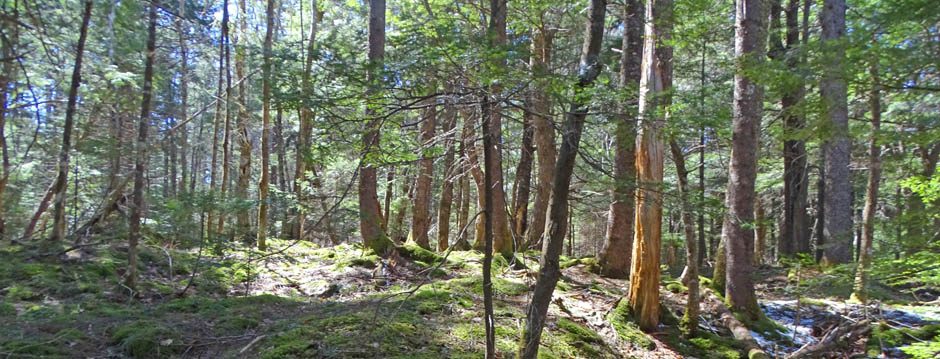| HWA in Nova Scotia Subpages – Eastern Hemlock Notes – About “In the Quiet & the Dark” – Comprehensive Info – The Adelgid – Pesticide Treatment – Biological Control – Silviculture – Post HWA infestation Impacts (THIS PAGE) |
Impacts and Management of Hemlock Woolly Adelgid in National Parks of the Eastern United States
Scott R. Abella Southeastern Naturalist, 13(6):16-45 (2014) PDF “… Eighty-five national parks, or 21% of all parks in the US national park system, are encompassed within the range of Eastern Hemlock…Results of research on HWA impacts to forest species composition, soil nutrient cycling, watersheds and fisheries, wildlife habitat, and visitor experiences and safety have already been reported from these parks. A general principle is that after Eastern Hemlock forest decline, some species (e.g., some avian species favoring other tree species) benefit, while those associated with Eastern Hemlock must adapt or decline…Forecasting future forest-tree composition is complicated by the fact that: (i) many possible replacement tree species are themselves threatened by introduced damaging agents, (ii) changes hinge upon understory dynamics such as invading exotic plants or expansion of native shrubs, and (iii) this die-off event is occurring within a context of multiple interacting factors such as elevated herbivory, climate change, and atmospheric pollution. Some management strategies for parks include: intensive HWA chemical treatment at priority sites, biocontrol, genetic manipulation for HWA resistance in Eastern Hemlock, exotic plant treatment, facilitated establishment of native vegetation, or doing nothing, the last of which also is likely to result in appreciable forest change. Threats to US national parks posed by introduced forest pests and pathogens warrant heightened attention.”
